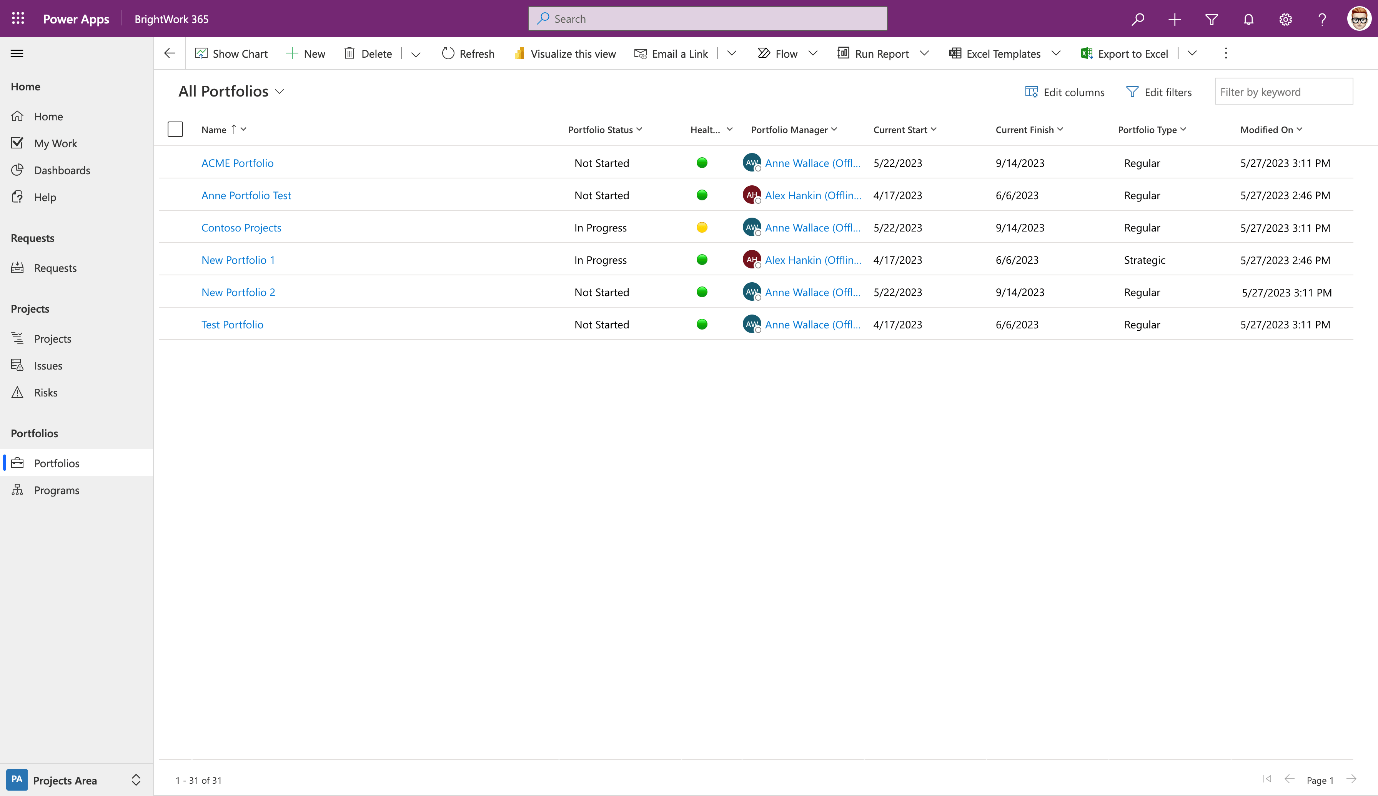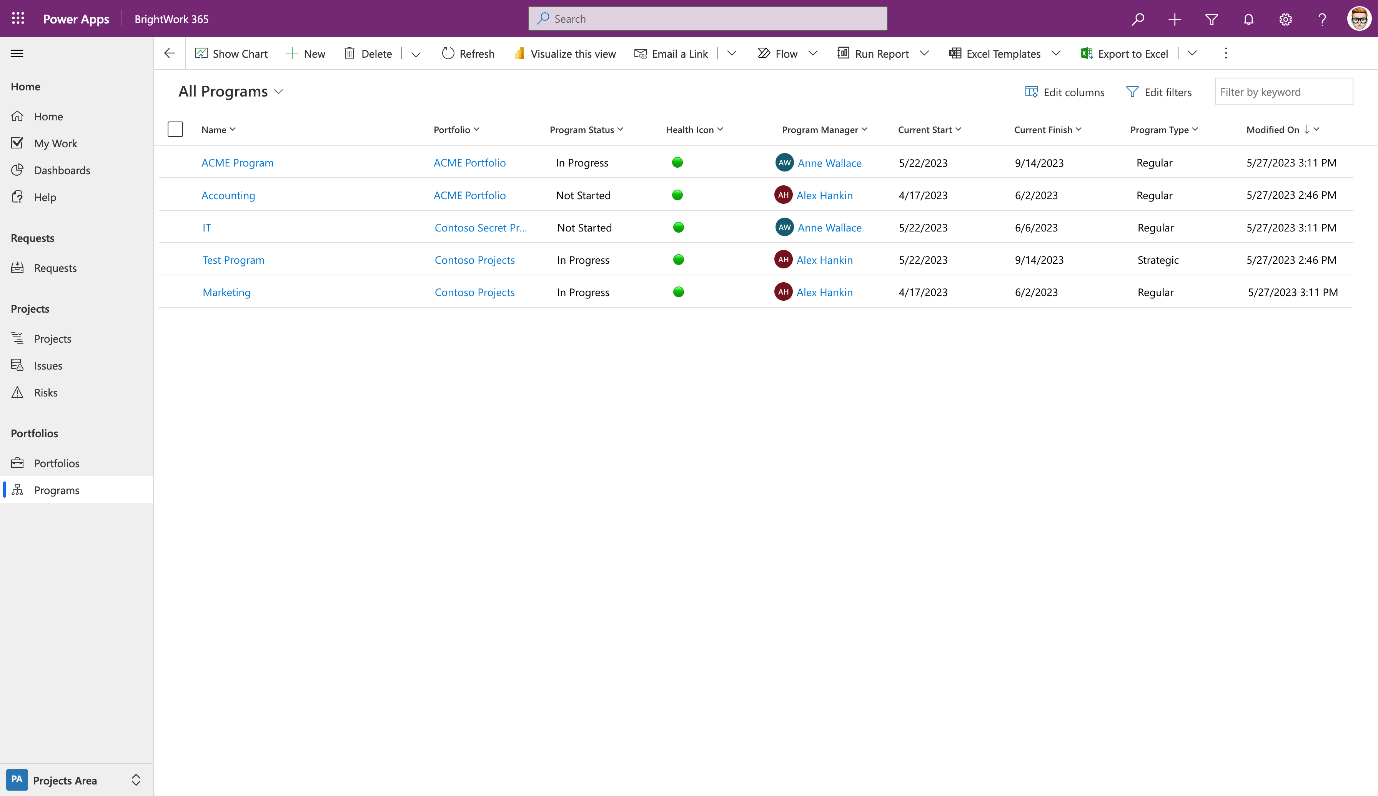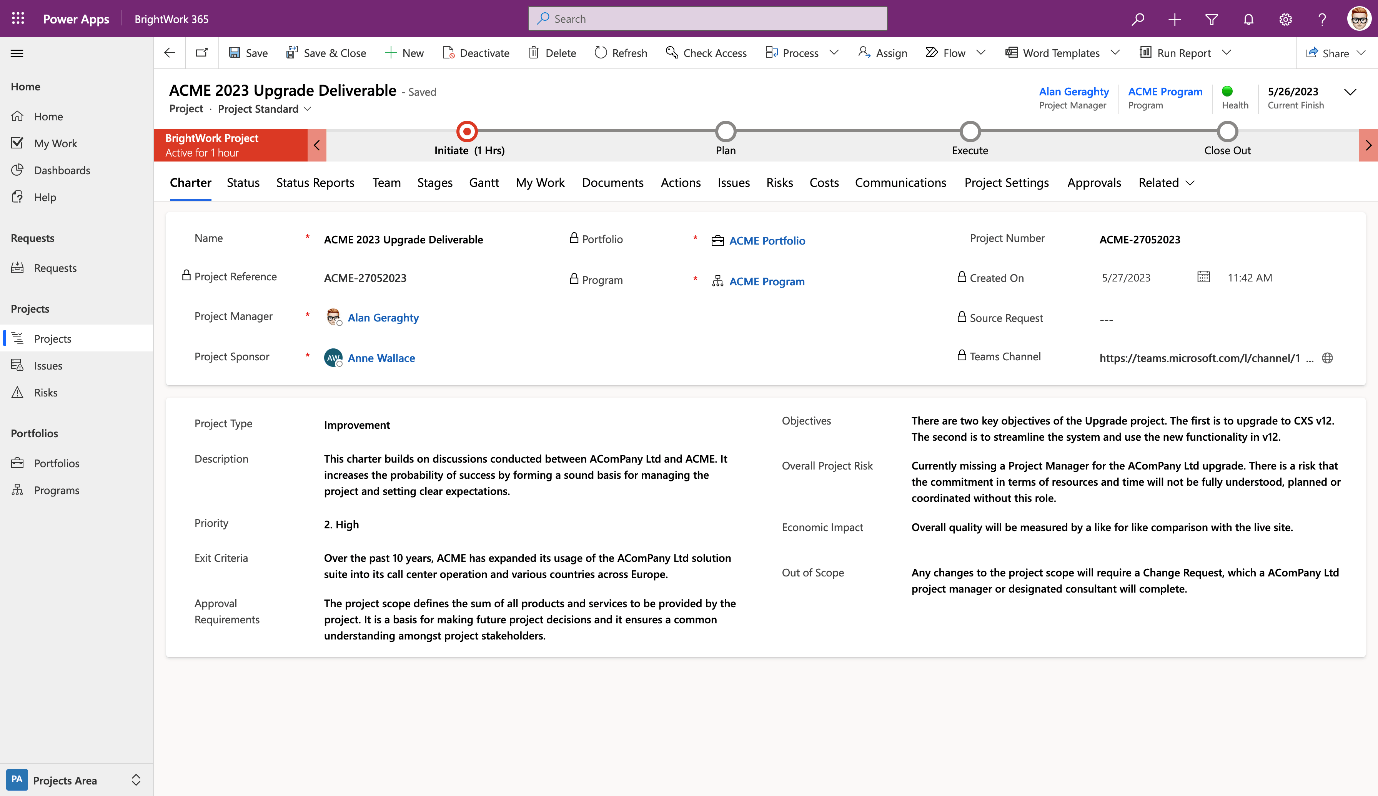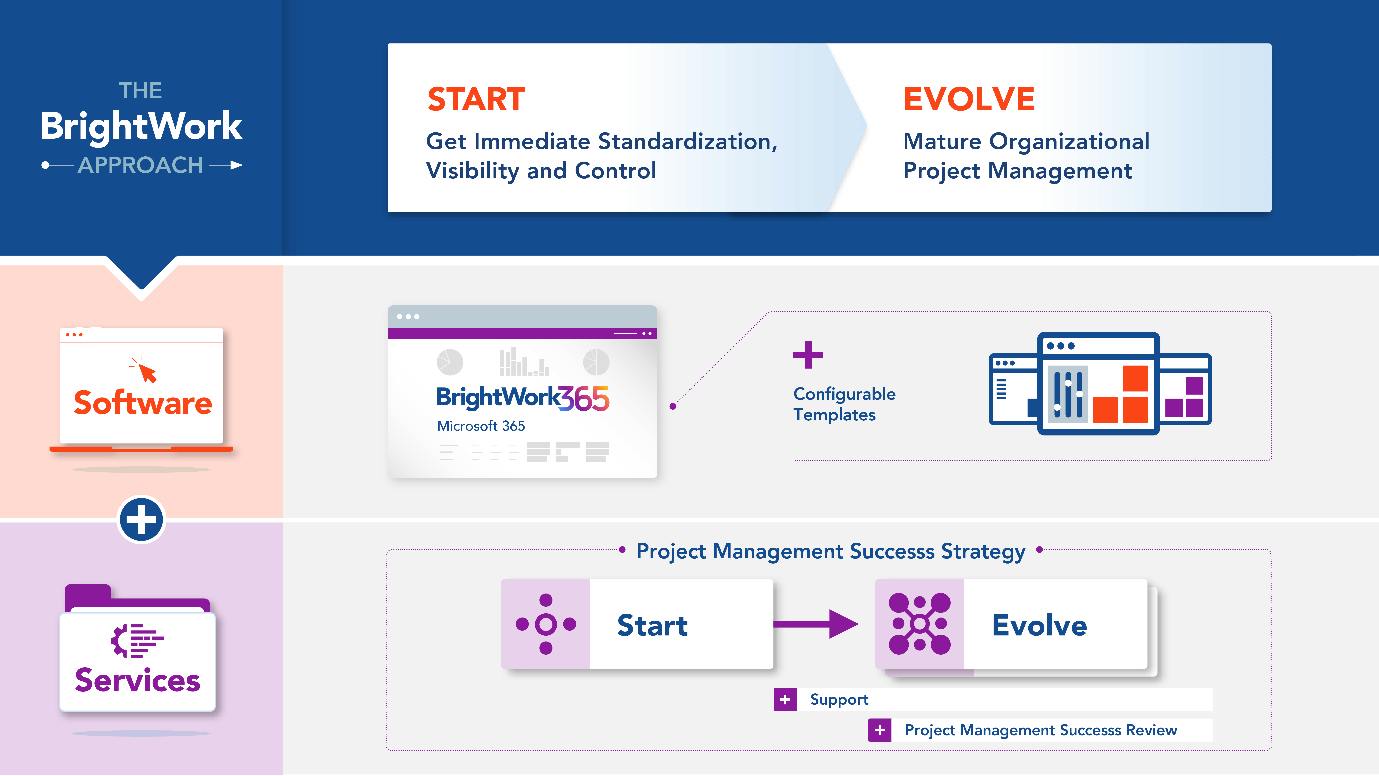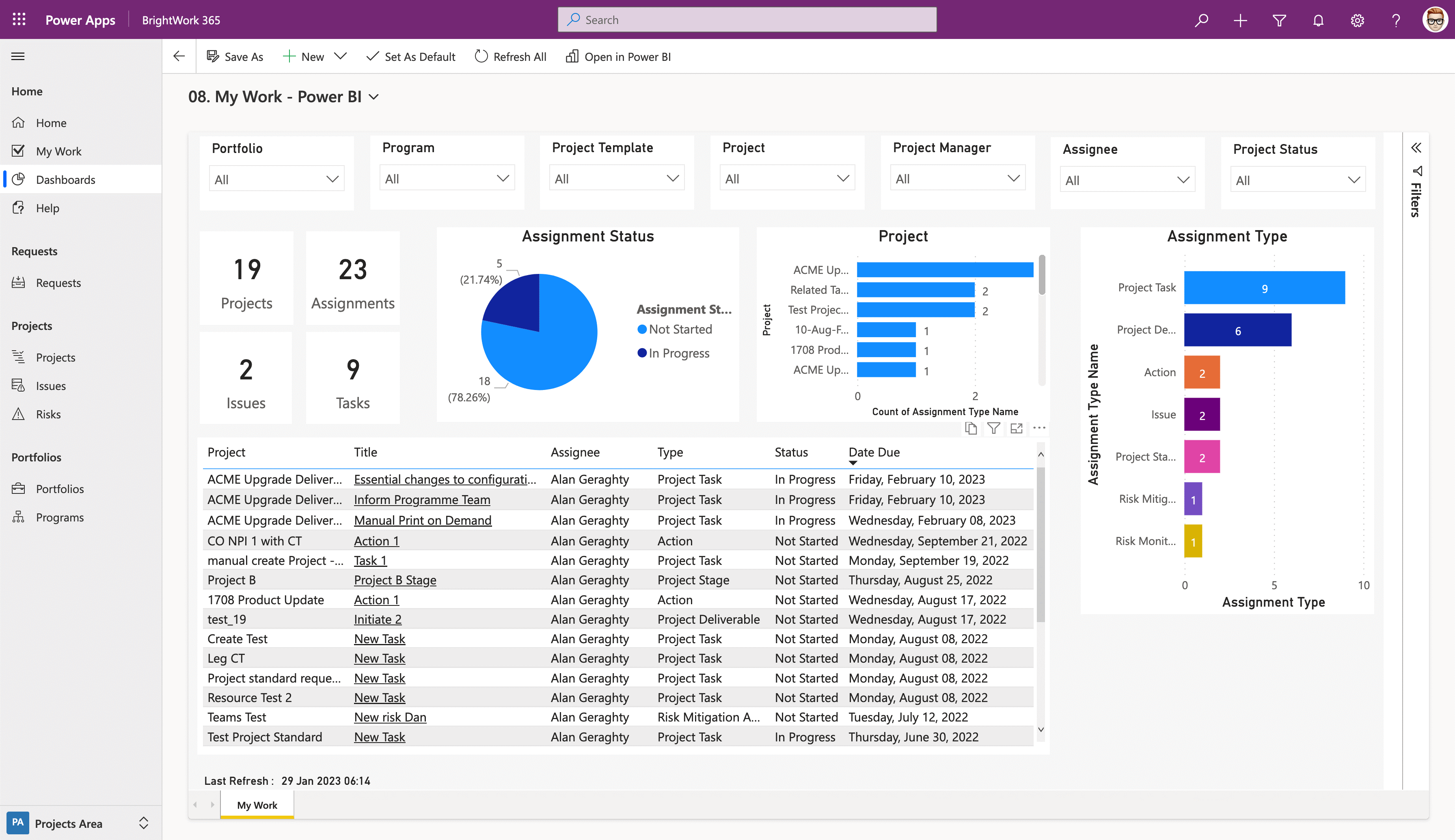Driving Business Transformation with Project Portfolio Management
When implemented correctly, project portfolio management (PPM) transforms organizational approaches to project management and business growth.
PPM ensures organizations execute the right projects at the right time in a consistent way to deliver maximum business value. According to the Project Management Institute, PPM is a key to competitive advantage, allowing senior management to make effective decisions in a timely way.
Like any major change within an organization, introducing PPM practices and processes requires a roadmap to success. In this post, we’ll cover a 9-step plan to guide you on how to manage a portfolio of projects.
How to Implement an Effective Project Portfolio Management Strategy – 9 Steps
1. Set the Strategy
Aligning projects to business strategy is core to project portfolio management.
What Is a Business Strategy?
Johnson & Scholes (2005) define strategy as:
“the direction and scope of an organization over the long term”.
Porter (1995) describes strategy as:
“a process of analysis which is designed to achieve the competitive advantage of an organization over another in the long term”.
Strategy is influenced by Vision (where the company wants to be) and Mission (what the company does). These goals are translated into initiatives or projects to deliver business value.
Setting Clear Business Goals for Project Selection
What does your business want to achieve and when? What solutions or internal transformations are needed to reach these goals?
Speak with senior project stakeholders and executives about their definition of value and expectations from current projects.
Understanding this big picture will help you win executive support for PPM in Step 2 and develop a ranking system for projects in Step 4.
Standardize your project management processes with Microsoft 365
Watch a demo of BrightWork 365 project and portfolio management templates for Microsoft 365, Power Platform, and Teams.

2. Win Executive Support for Project Portfolio Management Implementation
Introducing PPM requires a shift in mindset and processes that some individuals will resist. To reduce this friction, you need to identify key stakeholders and share your vision for PPM to win their support early on.
Support should start from the top of your organization and spread through every department. In fact, the PMI reports that 90% of high-performance organizations have strong support for PPM from their CEO and C-level executives, which is one of the keys to successful project portfolio management..
PPM will inform how every team conducts projects so take time to work with the right people from the outset. PPM is a top-down approach with senior executives making key decisions about projects at the portfolio level.
Common Questions About Project Portfolio Management Process
As with any change, individuals are going to have questions! Here are a few to expect:
- What is project portfolio management and why do we need it?
- How will the organization benefit?
- Will PPM support strategy execution?
- What is the short, medium, and long-term vision for PPM?
- Will there be any impact on current or upcoming projects?
- Will there be one or several portfolios?
- How will PPM integrate with current processes?
- Will we need to recruit or re-deploy resources to prioritize certain projects ?
- Do we need to invest in any new systems or project portfolio management software?
3. Build the Implementation Team
With strategic alignment and senior support in place, you can develop an implementation team. The team should include technical team members, portfolio managers, and other key stakeholders.
You may also need to establish a steering committee or portfolio governance body, consisting of senior management and directors, to help with key decisions.
4. Collect Project Data
Assessing ongoing projects and the project pipeline against the organization’s strategy is an important step towards project portfolio management.
Collecting this data will allow the team to answer essential questions such as:
- Number of current projects
- Number of upcoming projects
- Number of projects aligned to one strategic goal
- The overall cost of all projects
- Projected return on investment (ROI) of all projects
- Estimated v actual schedules.
Standardizing Data Collection for Consistent Project Comparison
Gathering project data also provides an opportunity to review processes throughout the organization. Is the same naming convention applied to all projects? Does every project have the same documentation? Do project teams conduct and record a post-mortem when the project is finished?
You will likely find project management approaches vary by department or team, which makes comparing and ranking projects a little tricky!
There are a few areas in which you need to collect data. These include:
- Project data: Name; project manager; project sponsor; charter or description; schedule and milestones; risk level; resource allocation; projected ROI, and reporting schedule and tools.
- Organizational data: Available resources and skills, and current and upcoming resource assignments.
Categorizing Projects Based on Strategic Value
You can also categorize projects by status to understand their strategic value to the organization. Categorization could look like:
- Proposed projects
- Approved projects (may be funded but not active)
- ‘Grow the Business’ projects
- ‘Maintain the Business’ projects
- Completed projects
- Canceled projects.
How you collect and collate this data will depend on available systems. If your organization is using a collaborative project tool such as BrightWork 365, this process will be easier.
Standardize your project management processes with Microsoft 365
Watch a demo of BrightWork 365 project and portfolio management templates for Microsoft 365, Power Platform, and Teams.

5. Evaluating Project Performance and Strategic Alignment
Having gathered all relevant data in one place, it’s time to review the current project portfolio as part of your portfolio management plan.
- Develop a ranking or scoring system to ensure the evaluation is objective and consistent. Learnings from this step will affect the creation of a new portfolio later on.
- Review the portfolio and look for any obvious issues, such as duplicate projects, interdependencies between projects, high-risk projects, and over-allocated resources.
- Probe deeper to assess the number of projects that meet strategic goals and the likelihood of completing them. Also, consider what you can achieve with available resources.
6. Create Your Portfolio
Create a new portfolio by changing the status and priority of the projects, for example, stop any duplicate projects and start relevant on-hold projects.
The goal is to build a well-rounded portfolio that meets internal requirements and delivers a healthy ‘risk-reward’ mix.
At this stage, define and document key processes, such as project request management and PPM reporting structures, as part of your PPM implementation project plan..
Depending on existing tools, the organization may need to upgrade or purchase portfolio management dashboard to support the new approach.
Project and Portfolio Management Templates
One of the best ways to support your process is to build project and portfolio management templates into your PPM solution by leveraging effective project portfolio management techniques for project teams to use.
You will also want to be able to structure your project hierarchy so that projects are grouped in a way(s) that makes sense for your organization.
Using BrightWork 365, you can leverage Microsoft 365 and the Power Platform to organize the projects in your portfolio in different ways.
Portfolios
Portfolios are the highest parent level within the BrightWork 365 hierarchy. Portfolios consist of child programs and all of the projects within the respective programs, creating a clear hierarchy from portfolio to program to project.
Your BrightWork 365 environment can have more than one portfolio. Portfolios can be grouped by location or business function, for example.
Programs
A Program is the first child level under a Portfolio. It allows users to group related projects together in order to manage and report on them in a coordinated way. For example, if your portfolios are grouped by business function then the Marketing Portfolio may have different programs for various marketing areas, like field marketing, branding, digital marketing, etc.
Projects
Programs are made up of multiple child projects. Within BrightWork 365, you can have multiple project templates to support the different ways of working for each project team or department, all while keeping the project sites maintained neatly in the project hierarchy in Microsoft 365.
7. Test and Refine
Before introducing the new portfolio and process to the whole organization, test your assessment with a few stakeholders and use their feedback to refine as needed.
You may also need to work with a user group to test new project management software or processes, for example, project request procedures.
8. Project Portfolio Management Roll-out
Working with senior management, develop a roll-out program. It is advisable to start with one department and evolve with more departments or teams later on.
Depending on the scale and scope of projects, you should consider using a change management plan and a detailed project portfolio management implementation plan to help overcome any obstacles or resistance to new approaches.
Set realistic expectations with end-users and maintain regular communication so you can quickly address any unexpected issues.
9. Learn and Adapt
At BrightWork, we advocate the ‘Start-Evolve’ project management approach:
- START by focusing on your immediate needs.
- EVOLVE with experience.
The same approach also works for project portfolio management.
Assess Portfolio Performance Regularly
Using agreed reporting schedules, metrics, and periodic reviews, assess your portfolio from two perspectives every few months:
- Strategic – overall portfolio results
- Tactical – health and performance of individual projects.
Look for short, medium, a long-term opportunities to refine your PPM strategy.
This agile approach ensures the portfolio remains aligned with strategic goals through strategic project portfolio management, providing an opportunity to gather feedback from key stakeholders at regular intervals.
Standardize your project management processes with Microsoft 365
Watch a demo of BrightWork 365 project and portfolio management templates for Microsoft 365, Power Platform, and Teams.

This post was originally published in May 2021 and has been updated for freshness, accuracy, and comprehensiveness – including how you can use Microsoft 365 to help your PPM implementation plan.

